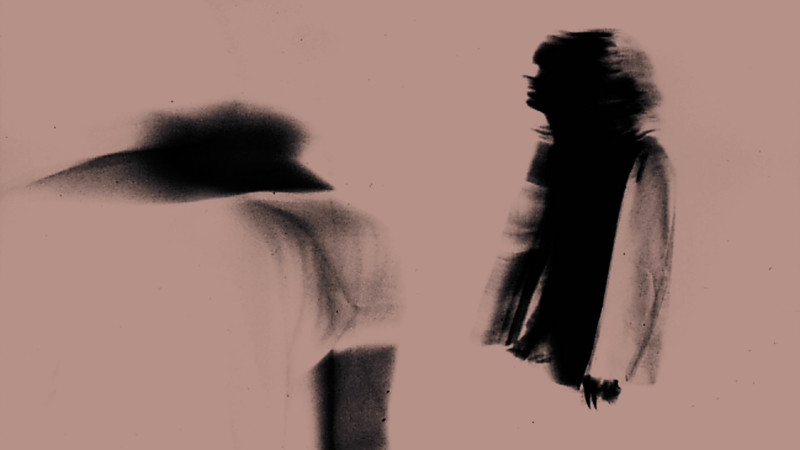unspace
Virtualism, the: philos. Opinion according to which reality can be recognized only from the effect of forces (and counterforces).
Virtuality: 1. inherent power or possibility 2. illusory spatial world (simulated by computer)
virtual: existing according to force or possibility (but not always really existing)
function: reverberation room, built in 1935 in the basement of the ORF radio building, served for a long time exclusively for the analog generation of acoustic room effects: the signal was sent down into the room, projected there via loudspeakers and the reverberation (the reaction of the room) was recorded again with microphones. almost three decades ago, the use of the room became superfluous due to the possibilities of electroacoustics. since then, it has stood empty.
the essential quality characteristic of a reverberation room is described by the linearity of the signal processing. i.e. it is considered ideal if the room reacts to all frequency ranges in the same way, i.e. if it does not alienate the signal by amplifying certain sound aspects. such alienations impose themselves on the unroom, are easily accessible here especially in the marginal zones of the listening area: the bright, sharp purring of footsteps is just as perceptible as the room-filling/body-feeling tremor of the door slam. in its original function, these "faults" were of little importance: due to the reaction of the space, the incoming signal was mainly provided with reverberation (and related space-psychological characteristics). however, if the incoming signal now already represents the space reaction, interference, resonance, standing waves and other phenomena occur. with repeated projection of this space reaction, complex, space-chaotic structures gradually form.
unraum becomes an instrument, a burr walk on the borders of auditory perception, measured by the specific characteristics of this strange space. these characteristics finally form the projection frame for the sound installation "unraum": sound quanta are taken from the concise aspects of the space, repeated and transformed with replications changing minimally in their microstructure. in the strict time-formal structure lies on the one hand the aesthetic reference to the character at rest in itself, the completed history of the space. on the other hand, this compositional technique opens up the possibility of overcoming the space-inherent potential with material that is equally space-inherent: the path leads from the phenomena of acoustics to psychoacoustics. if one surrenders oneself to the physical/psychical border situation and lets oneself be washed around by the sound bath, new spatial levels, new volumes and their fields of action become accessible: acoustic virtuality takes hold, transcends the physical (spatial) borders, turns, mirrors, bends. the listener stands in the middle of the reverb, becomes a reverb space himself, a resonating body and becomes part of the composition through his spatial position/change of position.
way entrance - foyer - hallway - glass door - narrow staircase - in the basement. long low corridors, heavy ventilation pipes, power lines, bad light, many doors - one made of steel. opened, the view falls into a dark room with dense concrete walls. impressions gathered during the way to the room and impressions conveyed by the view into the room form a mixture: space like a capsule in the middle of the building foundation; the entire house seems to weigh around and on the room. expansion at first there seems to be space in the room. the deeper one penetrates into it, the more it seems to close, it seems to close up. the space that previously offered to be conquered seems to have disappeared. unspace is empty. a space that is not made for people. wrong proportions. smooth walls reinforce this impression. one tries to change the place, to avoid the dull impressions, to find other angles of view in order to get air, to make the condition in the room lighter. on the other hand, it shows a thousand faces: sections, facets, angles that constantly change according to the mobility of our eyes, of our entire body. the space is empty, without direction, unclear, ambiguous. it gives no certainties. no opposite in the space, no object of the same dimension. such objects would tell stories, could be touched, would form space, would divide the space into smaller, tangible units. walls concrete, smooth, almost polished like glass. smoothness in itself shows homogeneity. under the smoothness grey clouds seem to stir. structure pushes towards you. no trace the room was constructed only to house technical equipment. for its users it never existed as a walk-in room, was never entered because there was no need for it. so it records no traces of human activity.
due to the basement location, winding corridors and open cable lines, access is only possible within group tours.
"unraum" is part of a project cycle that offers material for testing psychoacoustic and psychovisual qualities of spaces. thus the installation is in direct succession to the cd "living room music", also produced with ORF-kunstradio.
© 1997 SHA.ART

